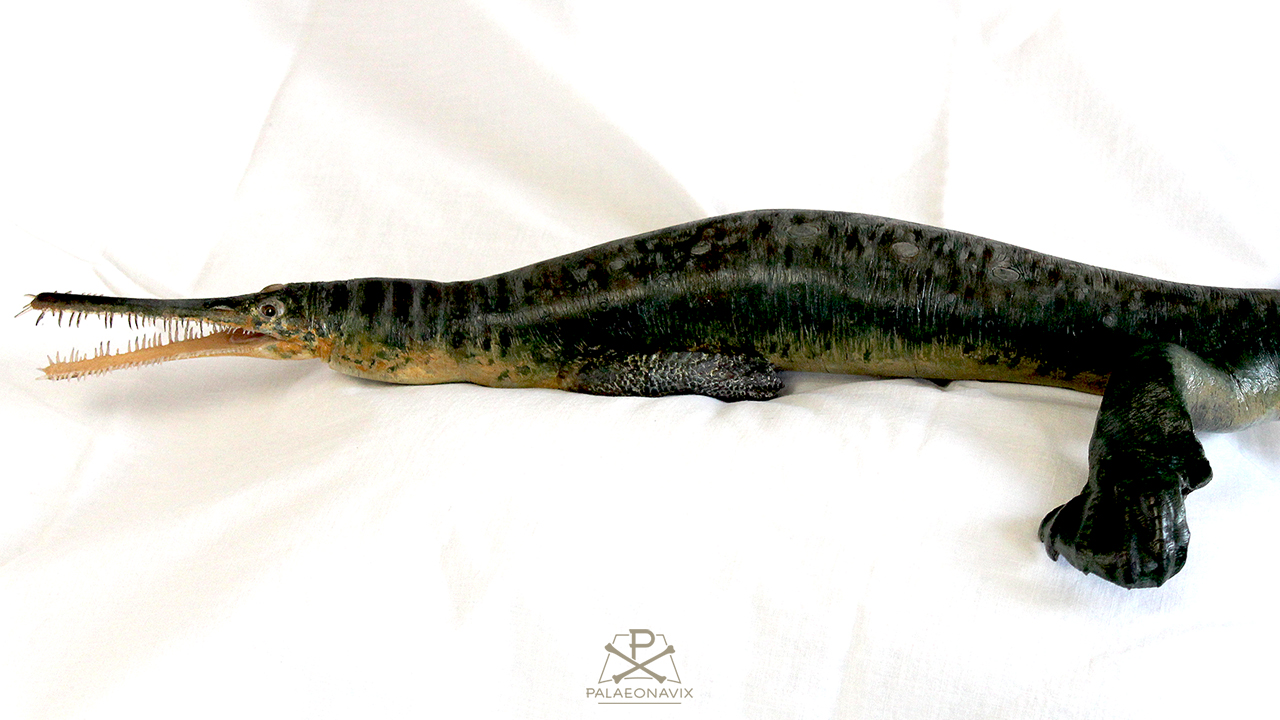Proof of plate tectonics: the rake-toothed Mesosaurus
A strange reptile inhabited large salt lakes in the southern hemisphere during the Permian period. As far as is known, mesosaurs were the earliest aquatic venture since the completion of the transition to land by the true, amniotic land vertebrates. That doesn't mean that other early reptiles and pelycosaurs weren't good swimmers. But visible adaptations for a return to aquatic life rarely occurred prior to the Triassic. Mesosaurus had thickened ribs as a diving weight. The arms were reduced because walking was of little importance. The hind feet were broad paddles. Apart from that, the animal almost resembled a seasnake (with a little bit of an otter, a sawfish, and of the platypus). The peculiar teeth formed a cage to catch masses of small brine shrimps. In view of such specializations, the relationship is difficult to analyse; Mesosaurus is usually regarded as an early branch of parareptiles. That the finds from Brazil and South Africa are confusingly similar had already been recognized by Alfred Wegener as evidence of continental drift: Mesosaurs were not oceanic animals, but became extinct long before the South Atlantic opened up.
handmade sculpture, 2014, 2023
original exhibition for Senckenberg Dresden / Museum Osnabrück


